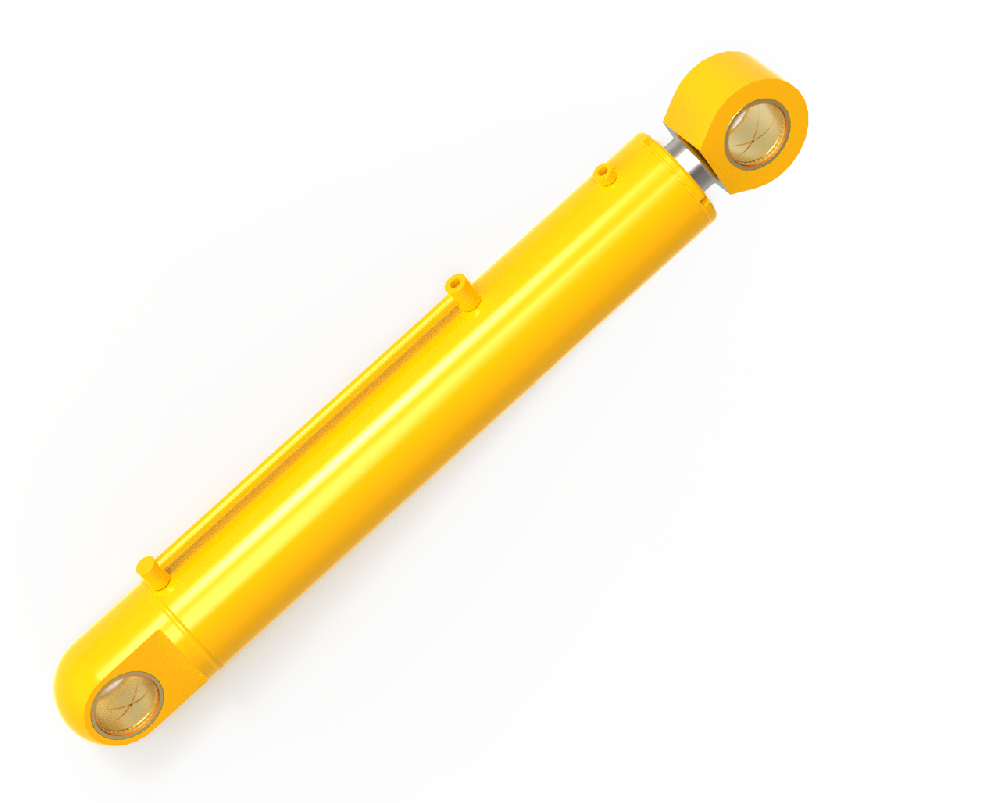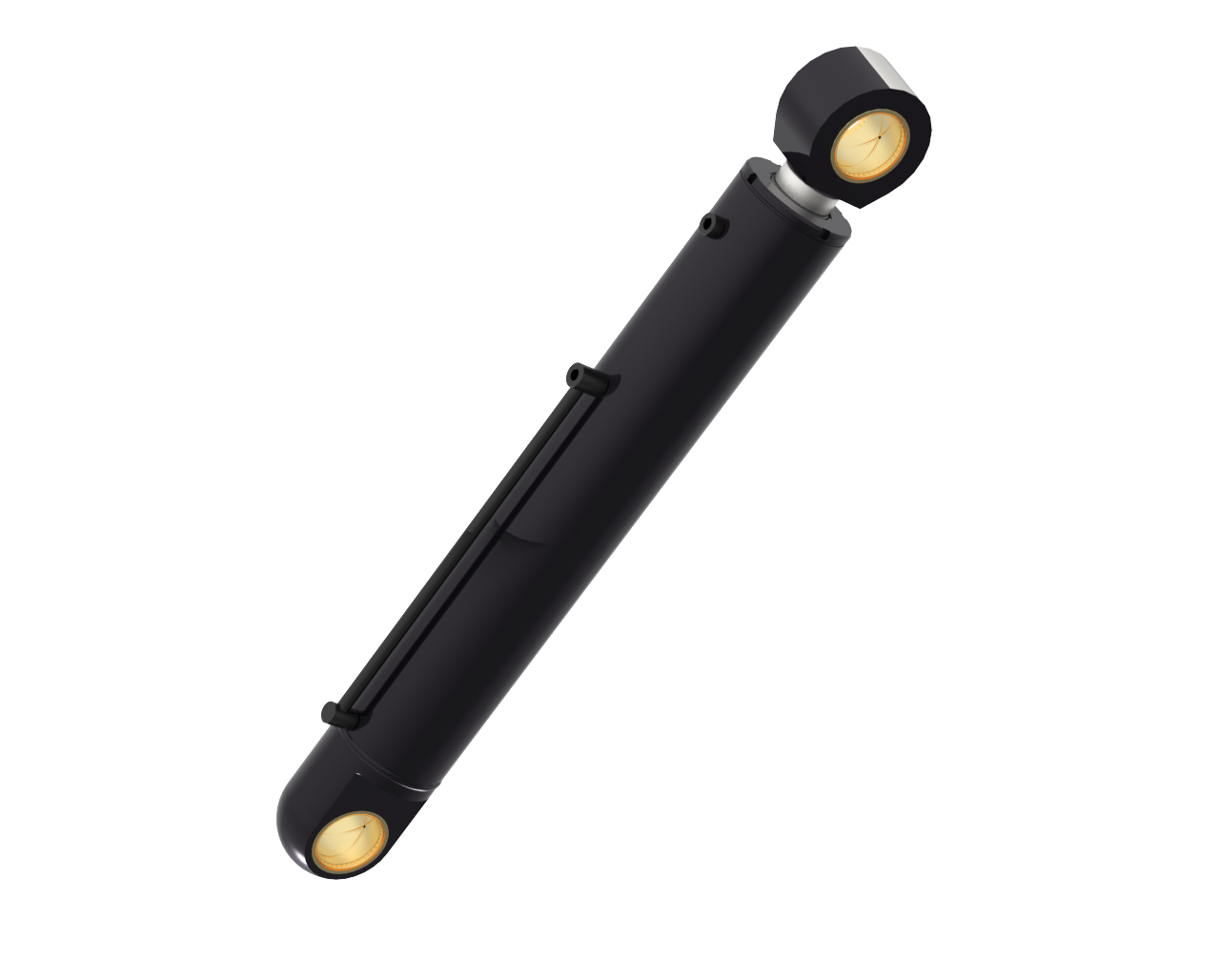
Comparison between rotary hydraulic cylinder and linear hydraulic cylinder
Release Time :
2024-07-09
In hydraulic transmission systems, the hydraulic cylinder serves as an actuator and plays a crucial role in converting hydraulic energy into mechanical energy. There are various types of hydraulic cylinders, among which rotary hydraulic cylinders and linear hydraulic cylinders are two common types. They each have unique characteristics and applicable scenarios, and this article will compare and analyze these two types of hydraulic cylinders.

1、 Comparison of structural principles
Rotary hydraulic cylinder, also known as swing hydraulic cylinder or rotary hydraulic cylinder, works by injecting hydraulic oil into the cylinder body, pushing the piston rod to rotate. This type of hydraulic cylinder usually consists of a cylinder body, a piston rod, two oil ports, and seals. When hydraulic oil enters from one oil port, it pushes the piston rod to rotate at a certain angle and is discharged from another oil port to complete a working cycle.
A linear hydraulic cylinder drives the piston rod to move back and forth in a straight line through the linear flow of hydraulic oil in the cylinder body. A linear hydraulic cylinder is composed of a cylinder body, piston rod, piston, sealing components, guide device, etc. When hydraulic oil enters from one end of the cylinder block, it pushes the piston and piston rod to move towards the other end, completing a working cycle.
2、 Comparison of functional characteristics
The main feature of a rotary hydraulic cylinder is its ability to achieve continuous rotational motion and has a large torque output capacity, making it suitable for situations that require rotational motion. Meanwhile, due to its compact structure and convenient installation, it also has high application value in some space limited situations.
Linear hydraulic cylinders have a greater thrust output capability and can achieve precise linear motion control. In situations where reciprocating linear motion is required, linear hydraulic cylinders have higher efficiency and stability. In addition, the simple structure, easy maintenance and upkeep of linear hydraulic cylinders are also one of the important reasons for their widespread application.
3、 Comparison of application scenarios
Rotary hydraulic cylinders have a wide range of applications in engineering machinery, metallurgical equipment, marine machinery, and other fields. For example, in excavators, a rotary hydraulic cylinder is used to drive the rotation of the working device; In metallurgical equipment, rotary hydraulic cylinders are used to drive the rotation of rolling rolls, etc.
Linear hydraulic cylinders are widely used in various mechanical equipment that require linear motion. For example, in CNC machine tools, linear hydraulic cylinders are used to drive the linear feed of cutting tools or workbenches; In automated production lines, linear hydraulic cylinders are used to drive the linear movement of conveyor belts.

4、 Summary
Rotary hydraulic cylinder and linear hydraulic cylinder each have their unique characteristics and applicable scenarios. Rotary hydraulic cylinders can achieve continuous rotational motion and are suitable for situations that require rotational motion; Linear hydraulic cylinders, on the other hand, have greater thrust output capability and precise linear motion control capability, making them suitable for situations that require reciprocating linear motion. When selecting hydraulic cylinders, the selection should be based on specific application requirements and working environment to ensure the stability and reliability of the hydraulic system.
RELATED NEWS
2025-02-28
How to diagnose hydraulic problems?
The Importance of Hydraulic Systems in Industrial ApplicationsHydraulic systems are widely used in industries such as construction, manufacturing, agriculture, and aerospace due to their ability to generate significant force with precise co···
2025-02-28
What is the life expectancy of a hydraulic cylinder?
Typical Life Expectancy of a Hydraulic CylinderThe life expectancy of a hydraulic cylinder can vary widely depending on its design, application, and operating environment. On average, a well-maintained hydraulic cylinder can last anywhere f···
2025-02-28
Why is my hydraulic cylinder not retracting?
The Role of Hydraulic Cylinders in Mechanical SystemsHydraulic cylinders are the backbone of many industrial applications, from construction equipment to manufacturing machinery. They operate by converting hydraulic energy into linear motio···
2025-02-28
How to check if a hydraulic cylinder is leaking internally?
Hydraulic cylinders are essential components in many industrial and mechanical systems, providing the force needed to perform heavy-duty tasks with precision. However, like any mechanical system, hydraulic cylinders are susceptible to wear ···
2025-02-28
What is the most common failure on a hydraulic cylinder?
The Role of Hydraulic Cylinders in Industrial ApplicationsHydraulic cylinders are the workhorses of many industrial systems, providing the force required to perform heavy-duty tasks. They consist of a cylindrical barrel, piston, piston rod,···
2025-02-21
What is the most commonly used hydraulic cylinder?
The Most Commonly Used Hydraulic CylinderThe tie-rod hydraulic cylinder is widely regarded as the most commonly used hydraulic cylinder. Its popularity stems from its simple design, ease of maintenance, and cost-effectiveness. Tie-rod cylin···

GET YOUR FREE QUOTE
We will contact you within 24 hours. ( WhatsApp/facebook:13665121168)
